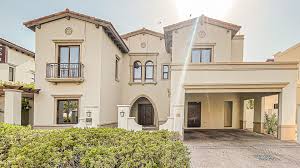Why GRP Gratings Are Transforming Industrial Infrastructure

GRP Gratings have become a vital component in the modern industrial landscape, offering a superior alternative to traditional steel and timber flooring systems. Their adaptability, resilience, and cost-effectiveness have seen them increasingly adopted across industries from construction and transport to utilities and marine infrastructure.
This blog explores the growing importance of GRP gratings, their unique advantages, and why industries are making the switch.
What Are GRP Gratings?
GRP (Glass Reinforced Plastic) gratings are composite materials made from thermosetting resins and glass fibres. These fibres provide strength, while the resin matrix binds them together, resulting in a lightweight, corrosion-resistant, and high-strength product.
There are two common types:
- Moulded GRP Gratings: Ideal for high-impact areas and environments with frequent exposure to moisture and chemicals.
- Pultruded GRP Gratings: Offer higher strength and stiffness, making them perfect for longer spans and heavier loads.
Both types are non-conductive, fire-retardant, and require minimal maintenance—making them a safe and economical choice for long-term use.
Key Benefits of GRP Gratings
GRP Gratings outperform traditional materials in several key areas. Here’s why more industries are turning to GRP:
1. Corrosion Resistance
Unlike metal, GRP does not rust. It is inherently resistant to chemicals, oils, saltwater, and moisture—making it ideal for marine, water treatment, and chemical plant applications.
This results in:
- Longer lifespan in harsh environments
- Reduced maintenance costs
- No need for coatings or protective treatments
2. Lightweight Yet Strong
GRP Gratings are significantly lighter than steel but offer comparable strength. This makes transport, handling, and installation far easier—especially in remote or elevated areas.
Benefits include:
- Reduced installation time and labour costs
- No need for heavy lifting equipment
- Safer manual handling for workers
3. Slip Resistance
Many GRP Gratings feature an integrated quartz grit surface, providing superior anti-slip performance—even in wet or oily conditions.
This ensures:
- Enhanced site safety
- Compliance with health and safety regulations
- Fewer accidents and downtime
4. Fire Retardancy & Non-Conductivity
GRP is non-conductive and can be produced with fire-retardant resins, making it safer for electrical installations, offshore platforms, and environments with flammable materials.
Applications benefit from:
- Reduced fire risk
- Compliance with fire safety standards
- Safer environments for workers
Common Applications Across Industries
GRP Gratings are being embraced across various sectors due to their adaptability:
Construction & Infrastructure
Used in walkways, catwalks, and maintenance platforms—especially in corrosive or high-moisture environments.
Water & Utilities
Essential in sewage treatment plants, pumping stations, and waterworks due to their resistance to chemicals and wet conditions.
Marine & Offshore
Perfect for jetties, pontoons, and offshore rigs where exposure to saltwater would degrade traditional materials.
Rail & Transport
Used in access platforms, station maintenance areas, and trackside walkways for their non-slip, lightweight properties.
Chemical & Manufacturing
Resistant to chemical spills and high-traffic environments, ensuring long-term durability in processing facilities.
Long-Term Cost Efficiency
Although the upfront cost of GRP Gratings can be slightly higher than timber or steel, the total cost of ownership is significantly lower due to:
- No corrosion
- No repainting or galvanising
- Minimal maintenance
- Long lifespan (often exceeding 20+ years)
For budget-conscious industries that also value performance and safety, GRP is a smart investment.
Environmental Advantages
GRP Gratings contribute to sustainable building practices:
- Long lifespan = less frequent replacement and lower resource consumption
- Low maintenance = reduced use of harmful coatings or chemicals
- Recyclable at the end of life cycle
Additionally, their lighter weight lowers emissions during transport and installation.
Read Also: Understanding Panic Attacks: Causes, Symptoms, and Effective Strategies
FAQs About GRP Gratings
How do GRP Gratings compare to steel gratings?
While steel offers high strength, it’s heavy and susceptible to corrosion. GRP provides similar structural integrity with the added benefits of being lightweight, corrosion-resistant, and non-conductive.
Are GRP Gratings suitable for load-bearing platforms?
Yes. Pultruded GRP gratings, in particular, are engineered for higher load-bearing capacities. They can be tailored to specific span and strength requirements.
Can GRP Gratings be cut to size?
Absolutely. GRP is easy to cut on-site without specialist tools, unlike steel, which requires hot work permits and protective equipment.
Conclusion
From enhanced safety and minimal maintenance to unrivalled durability in corrosive environments, GRP Gratings are transforming how industries approach flooring, walkways, and platforms.
Whether you’re in marine, transport, construction, or utilities, it’s time to explore the long-term value of switching to GRP.
For high-quality, UK-manufactured solutions backed by 38+ years of industry expertise, contact Engineered Composites today.




